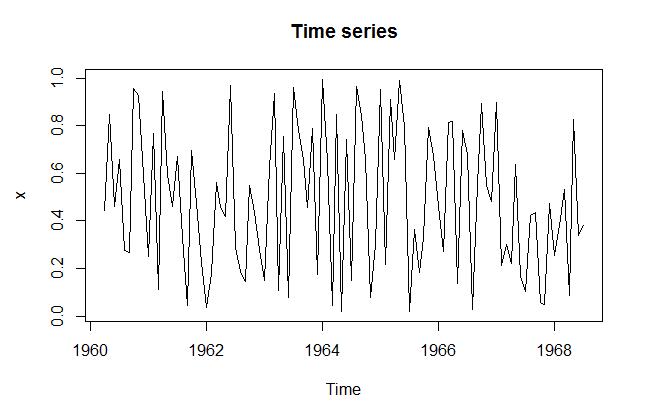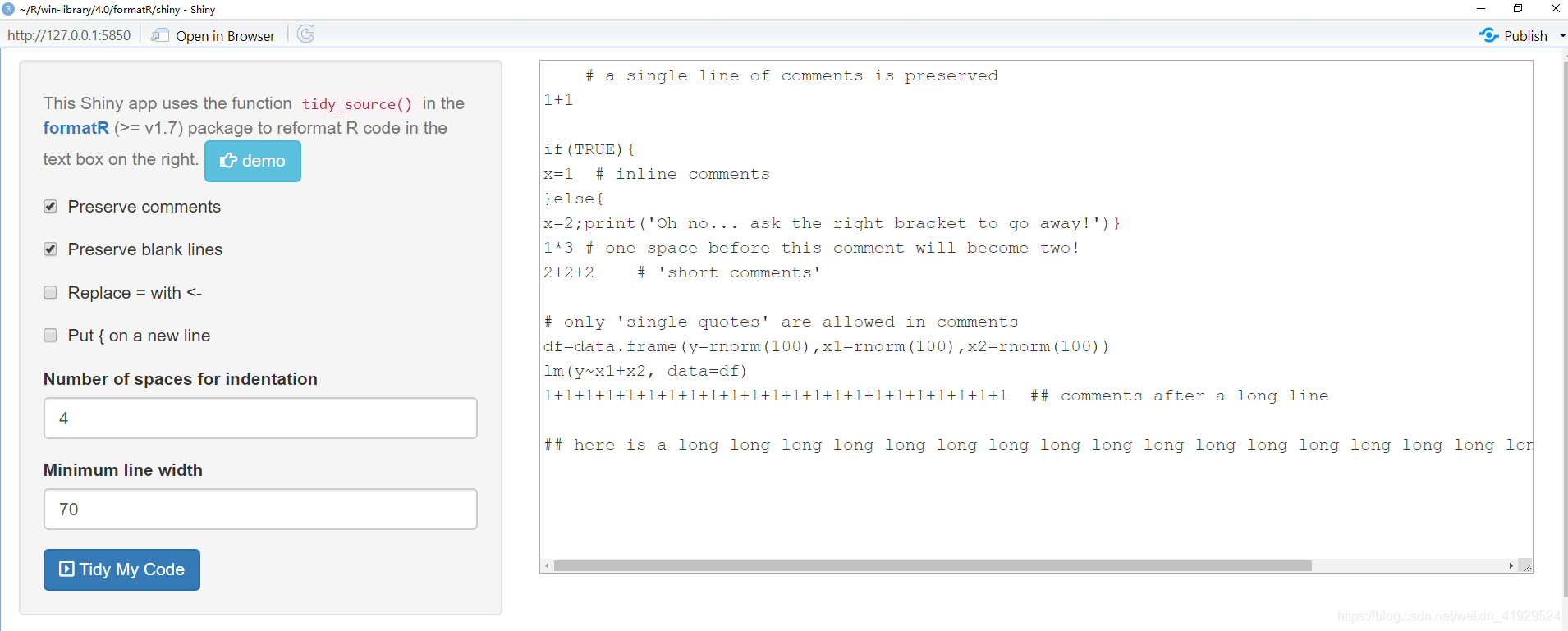1、创建测试数据:name
1、创建测试数据:
name <- c('A','B','A','A','C','D')
school <- c('s1','s2','s1','s1','s1','s3')
class <- c(10, 5, 4, 11, 1, 8)
English <- c(85, 50, 90 ,90, 12, 96)
w <- data.frame(name, school, class, English)
w
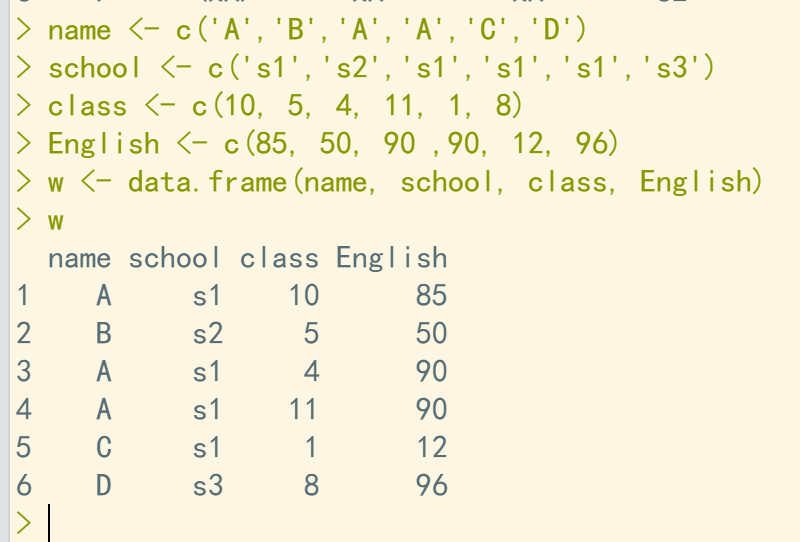
name <- c('A','B','C','F')
school <- c('s3','s2','s1','s2')
class <- c(5, 5, 1,3)
maths <- c(80,89,55,90)
English <- c(88, 89, 32, 89)
q <- data.frame(name, school, class, maths, English)
q

2、查看两个数据框
w
q
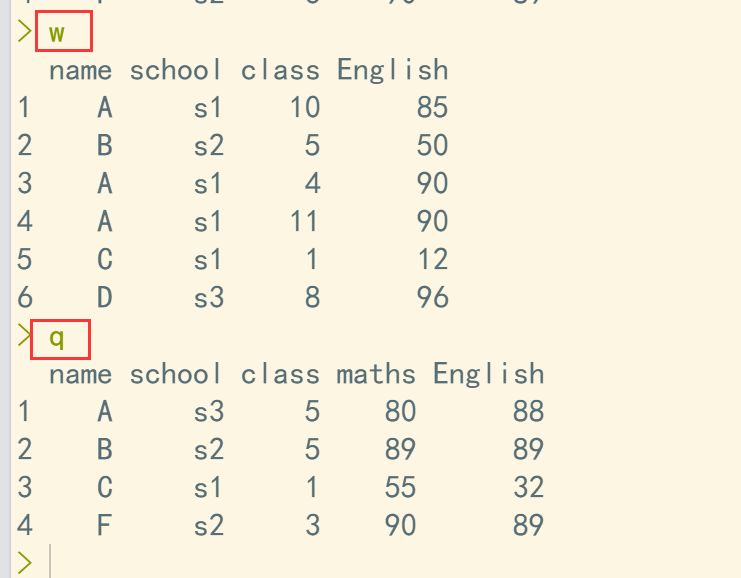
3、指定匹配列进行合并(按照行合并)
merge(w,q,by.x = 'name', by.y = 'name')
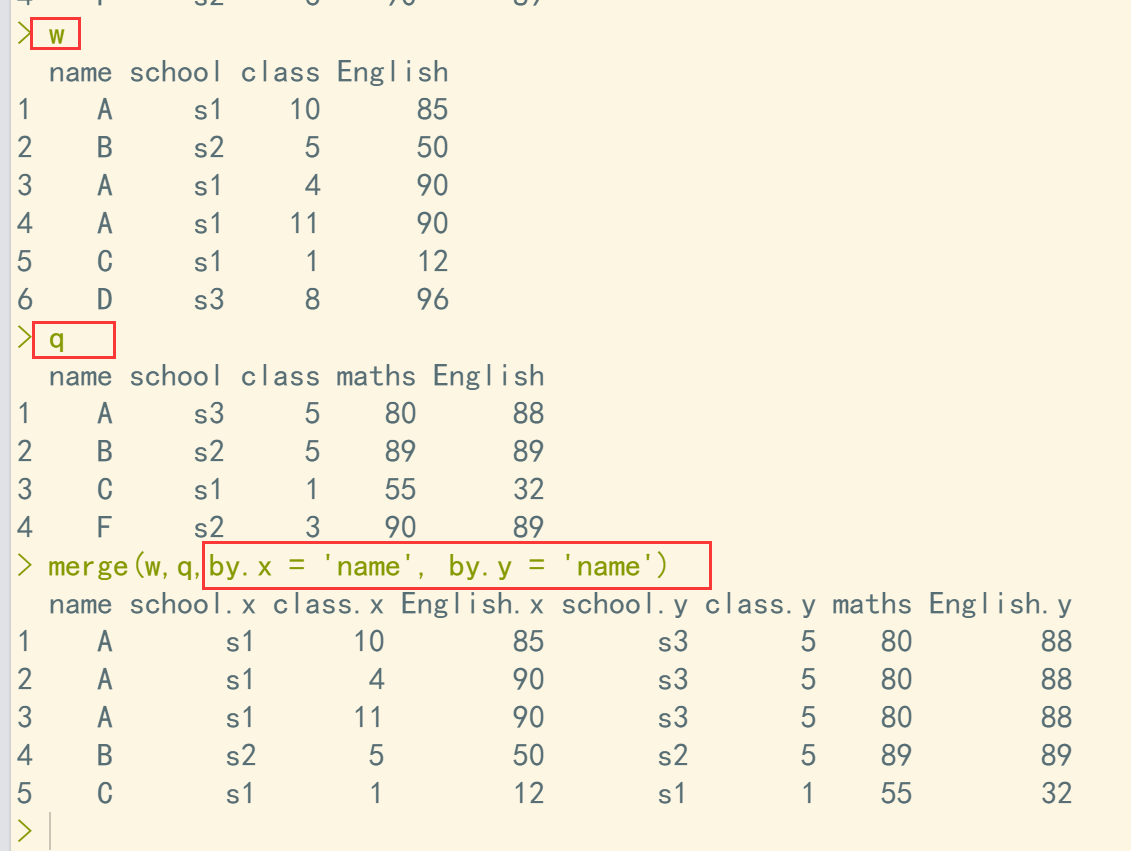
w
q
merge(w,q,by.x = 'school', by.y = 'school')

4、指定匹配列合并,没有的内容填充为NA
w
q
merge(w, q, all=TRUE, sort=TRUE)

5、依照左侧数据进行匹配
w
q
merge(w ,q ,all.x=TRUE,sort=TRUE)
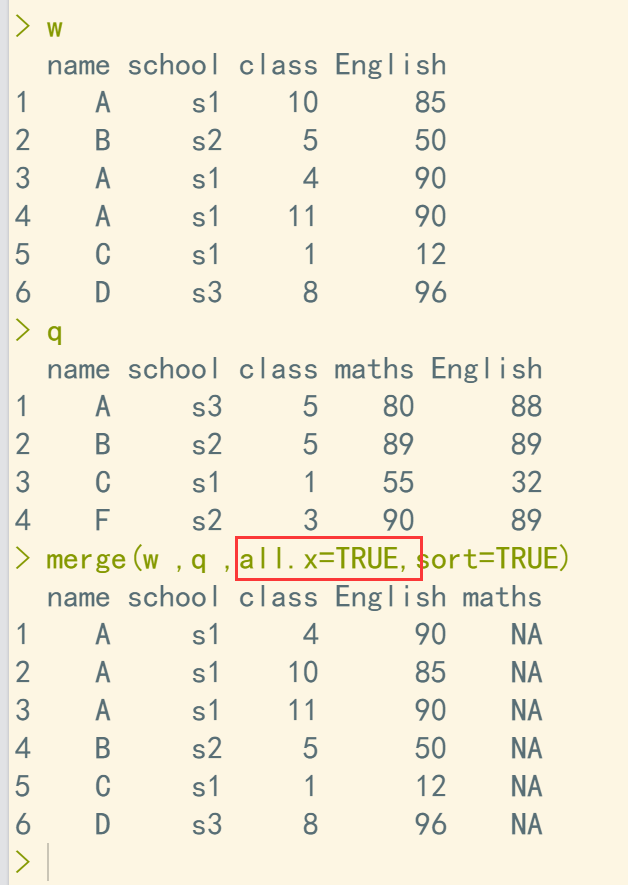
w
q
merge(w, q, by = 'name',all.x = TRUE, sort = TRUE)
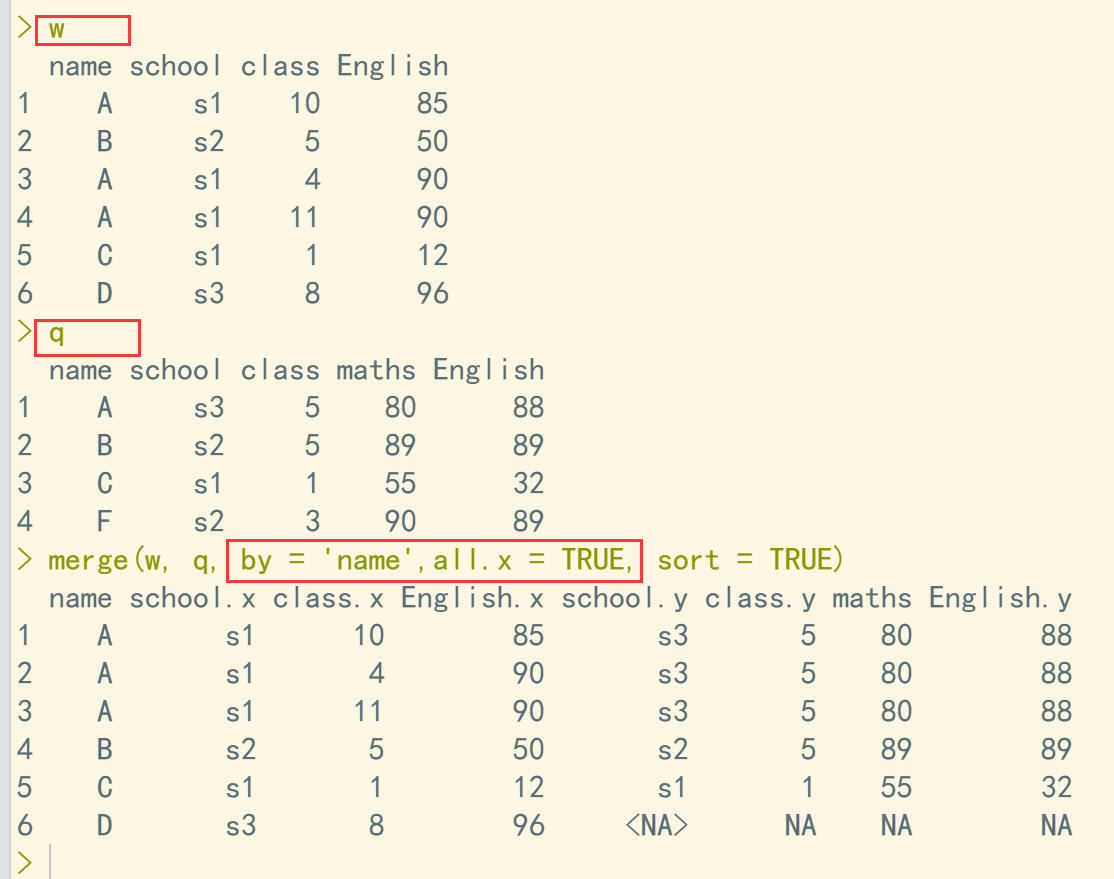
6、依照右侧数据进行匹配
w
q
merge(w ,q ,by = 'name', all.y=TRUE,sort=TRUE)
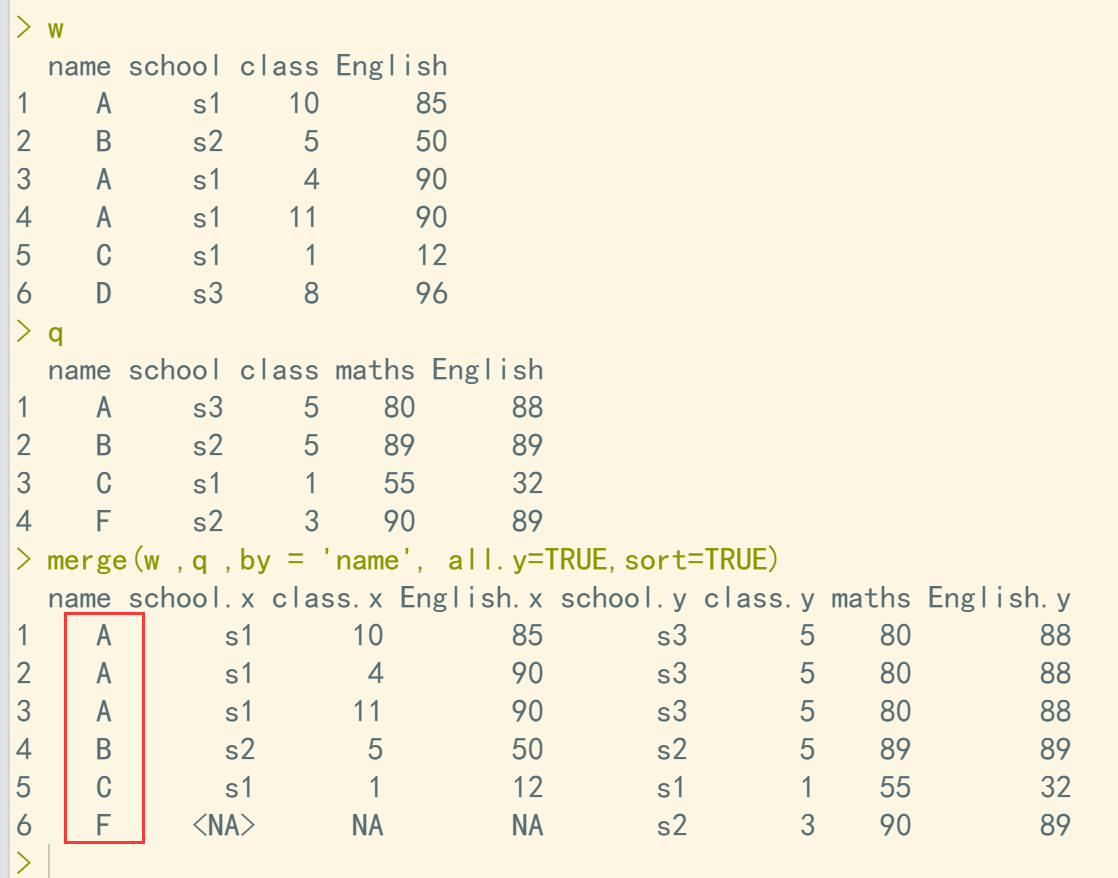
到此这篇关于R语言中merge函数的文章就介绍到这了,更多相关R语言merge函数内容请搜索好代码网以前的文章或继续浏览下面的相关文章希望大家以后多多支持好代码网!

